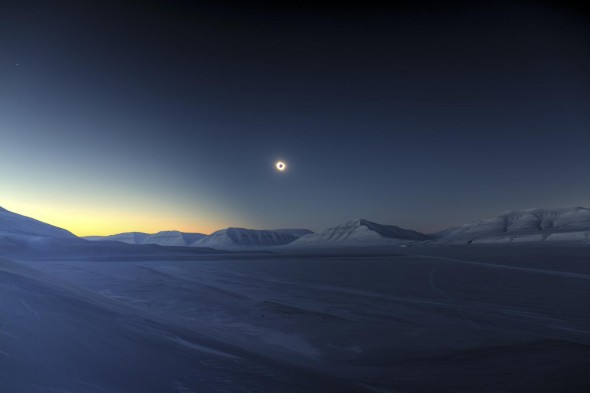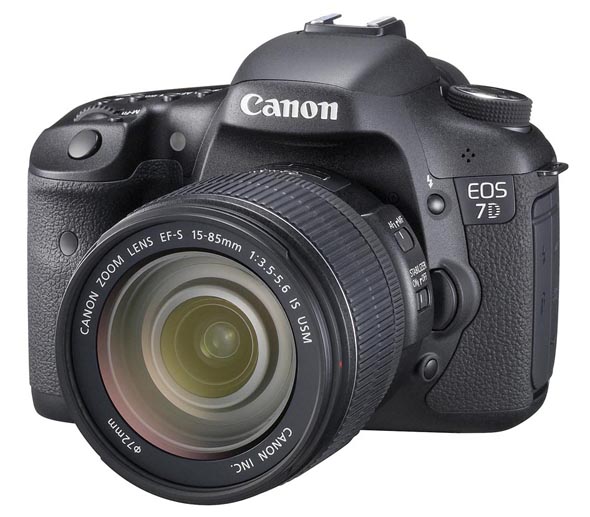Luc Jamet’s trip to the Arctic resulted in him taking the title of Astronomy Photographer of the Year with a stunning eclipse shot. Read on as he tells us the tale behind his image.

Image by Luc Jamet
Every so often you see a shot that just stops you dead in your tracks. A lot of things have been done, and done, and done some more, but one of the best things about photography as an art form is how people keep on finding new ways to recapture things that have been photographed before.
Above: case in point. A photograph of an eclipse is nothing new, but Luc Jamet’s shot is something special. We can’t help but wonder how long it took the Insight Astronomy Photographer of the Year judges to crown him winner of the competition, and suspect that perhaps it wasn’t too long at all. It’s a shot that’s hard to look away from. The small version above doesn’t quite do it justice – take a look at it nice and large.
As you might have discerned, we’re fans of Luc’s shot, and were massively grateful when he agreed to take some time to tell us the story behind it…
On the location…
“This picture was shot on March 20, 2015, during last total solar eclipse. Such events always attract many visitors worldwide, given their fame for boasting a unique and otherworldly kind of beauty.”
“This eclipse was quite a bit trickier for travellers, though, as to see it one had to choose between the remote Danish Faeroe Island and the even more distant Norwegian archipelago of Svalbard, in the Arctic.”
“I opted for the latter and subscribed to an organised trip, so as to not only enjoy the eclipse, but also experience an uncommon journey into a most exotic place.”
On the day of the shoot…
“When I woke up, the first thing I did was nervously check the weather. What a great surprise it was to discover a cloudless sky!”
“Shortly after breakfast, we loaded a couple of pulkas [animal-drawn sleighs] with quite a lot of gear: a number of cameras, tripods, eclipse glasses, filters, binoculars, audio and video recorders, and two scientific instruments.”
“Reaching our viewpoint was easy, but things got complicated for some of us. The -20°C temperature proved harmful for several devices, including the two scientific instruments, a fellow’s GoPro camera (that nonetheless worked just at the right time), a second camera body that I had brought for close-up views and, more importantly, my intervalometer. Indeed, I had planned to make a time-lapse movie for which the intervalometer was an essential accessory. Well, I eventually contented myself with manual shots.”
“As if to compensate, the show was glorious. We were ten people lost on a remote and cold island, while mysterious shadow bands ran on the ground during the last seconds before totality.”
“During the eclipse, the solar corona shone translucent and dishevelled against a dark-blue sky. Meanwhile, we could contemplate the moon’s shadow sweeping across the Earth’s atmosphere, surrounded by dawn-like orange and yellow hues. Two bright planets were within our eyes’ reach: Venus in front, and Jupiter at our back. All of this lasted but two minutes and twenty seconds, yet we were so mesmerised, it took us quite a time before we could talk again!”
On crafting the shot…
“Making this shot posed a two-fold challenge. First, it was not easy to determine the ideal bracketing settings, and then framing the scene proved quite difficult, too. There were many beautiful mountains in the background but also an annoying close slope on the left. Additionally, I wanted the bright colors of the Moon’s penumbra to fill a large part of the image while keeping the solar corona not too small and close to the centre. Hence, I had to set the camera orientation and focal length carefully.
“One may think that enduring the extreme temperature would have been a further challenge, but to me, it was part of the fun.”
On being named Insight Astronomy Photographer of the Year 2015…
“Winning the Astronomy Photographer of the Year was certainly an amazing and uplifting bonus, to say the least. The announcement itself let me stunned and incredulous for a few seconds. I still feel very fortunate to have been rewarded for a picture I much enjoyed taking.”
The technical details
Luc’s shot is an HDR composition made up of three individual frames, combined and tonemapped using Luminance HDR.

Camera: Canon EOS 7D, 15-85mm zoom lens
Settings: Three shots at 1/6sec, 0.5sec and 1.6sec. Aperture f/5, ISO 200
See more images from Insight Astronomy Photographer of the Year
About the Photographer
Luc Jamet is a French photographer, winner of the ‘Skyscapes’ category and overall grand prize in Astronomy Photographer of the Year 2015.
